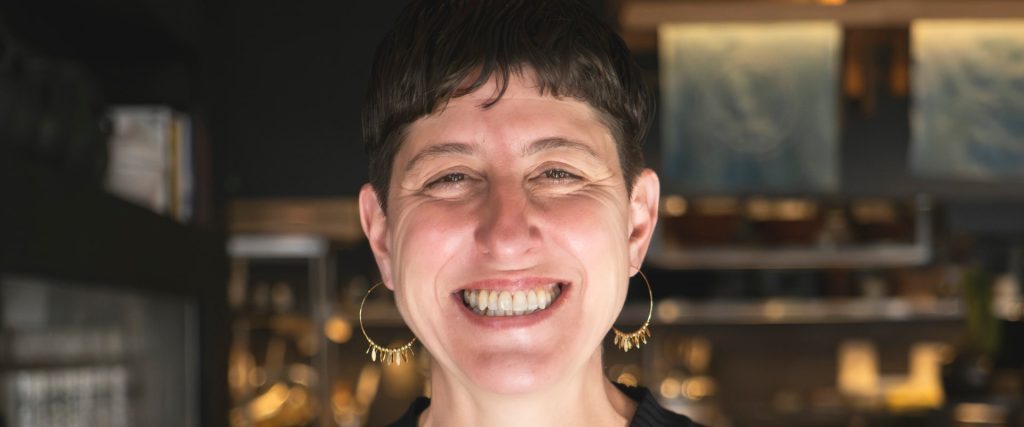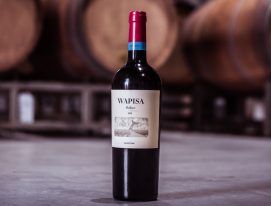An undisputed leader of the Argentine cocktail scene, Inés de los Santos grew up in a feminist household. The daughter of a psychoanalyst specializing in domestic violence, “the world of men” was a topic of conversation at home at a very young age. That is why, although the question of why she wanted to get into a man’s world is always annoying, she knows that it’s a conversation that still needs to take place. “You never know who might read this article, who needs to hear it, who’s missing out.”
Today, Inés de los Santos runs the celebrated CoChinChina, which has a bar below and offers fine dining above (at the restaurant called Arriba) with a range of pairing menus. On October 17, CoChinChina was named 26th in The 50 Best Bars ranking. She also shares, with her friend the chef Narda Lepes, the wonderful Kōna, a Japanese inspired restaurant in the Belgrano neighborhood. “Narda and I have our differences but we’re similar in one way: we’re both very sincere. I admire her, I know that the decisions she takes are correct.”
In the interview below, Inés de los Santos looks back over her career and discusses the dialogue between wines and cocktail-making which – thanks to her – is ever more dynamic.
Interview with Inés de los Santos
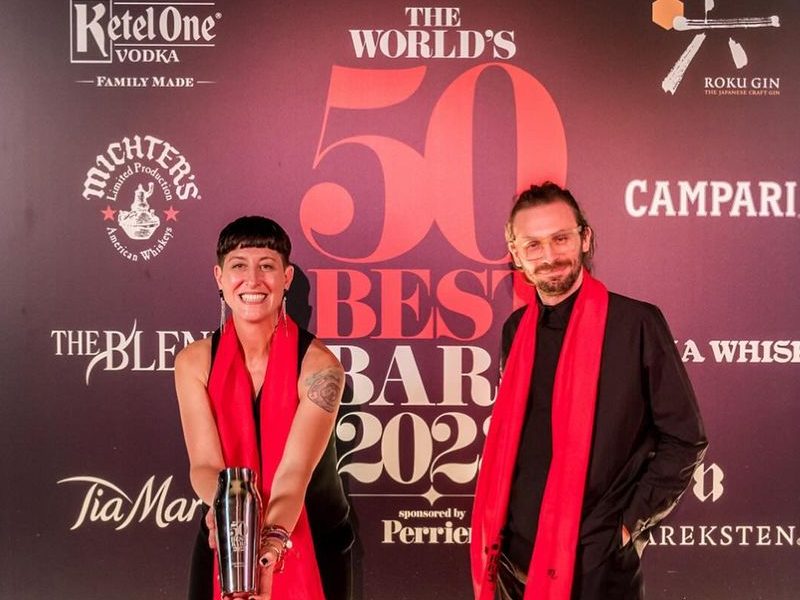
What was it like, in a country like Argentina, to have forged a career like yours?
Difficult. When I started out, it was a very bleak outlook: Google didn’t exist, you didn’t have a lot of the tools you have now, there weren’t any books. I didn’t know English, there weren’t any Martini glasses, there weren’t any cocktail shakers. You didn’t have Amazon, you didn’t have anything. There weren’t any bars! The bars there were at the time were, I don’t know, The Claridge, somewhere I couldn’t afford. But I’ve always liked a challenge. The first thing I did was go to the USA. I asked myself where the Tom Cruise film about cocktails is set. New York. I was so naive!
I didn’t get to enjoy my American Dream, I stayed four months and did what I could. Then opportunities began to appear, the world started to change, cocktails and bars got more fashionable. And I was ready and waiting.
My first job at a bar was at El Gran Bar Danzón, as head of the bar. That happened because I’d been waiting for years. They gave me a chance, I took it and stayed for eight years.
What is it about cocktails, the gastronomic industry, that made you believe it was worth the effort?
You have to be in love with the hospitality industry or you won’t last. I’m a daughter of psychoanalysts, I’ve been in analysis since I was a girl. I remember going to therapy and my psychoanalyst – a great person – said “There’s nothing wrong with your work being your life. I was confessing that I still talk about work after my shift, get up and start talking about work… And they said, “Stop punishing yourself, it’s what you enjoy.”
It’s a tough life, but an exciting one. Especially the learning. We’re learning all the time, because nothing ever stays the same in cocktails. And that’s exciting.
Hospitality & passion
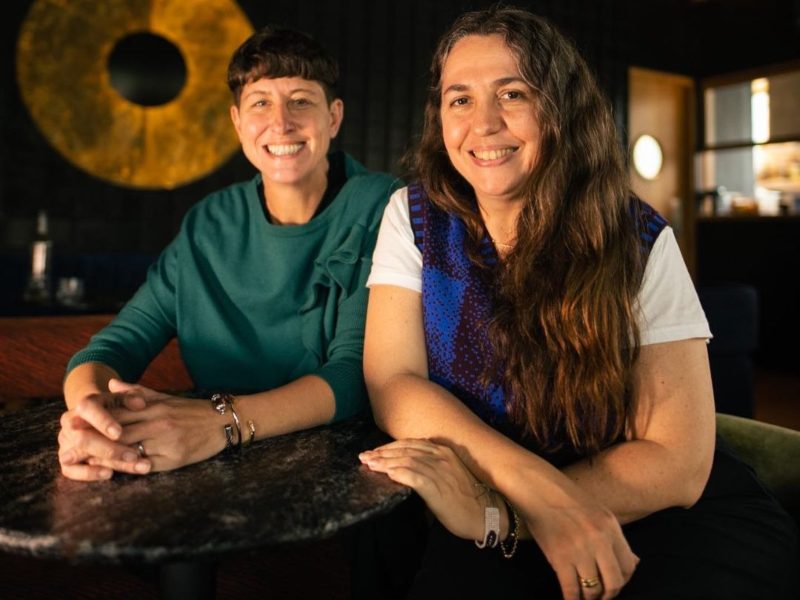
The term hospitality is increasingly used in the world of gastronomy and cocktails…
Hospitality is an enormous word. Today, it’s about putting yourself in your customer’s shoes deciding the right fabric for a chair, is it too coarse and scratchy? Sitting at the tables to see how the light is and whether there’s any glare from the lamp. It’s doing the whole journey from when they go to the app and make the reservation to when they go home. It’s putting yourself in the customer’s place and envisaging their experience.
And although the sector is still popular and expanding, not many names truly stand out, here and overseas.
It’s a little of everything, isn’t it? Passion, learning, professionalism, eagerness and talent. The truth is that you can’t do everything. I look at my career and I don’t know how I did it. When the pandemic hit, I had a project planned for a place where I now go to the gym. It couldn’t happen because it was on the first floor, the elevator was small, there wasn’t any fresh air. My partner called me a month in – halfway through April 2020 – and said, “I’ve got a place, you won’t like it, it’s in the Palermo beer district but it has the perfect dimensions.”
I went to the place and we decided to open CoChinChina. On the day we opened in 2021, we all went back into lock-down for 15 days. And then you could only open on Saturdays and Sundays at midday, from 11:30 to 4. I never thought we’d open in the daytime. It seemed like a big issue, but it was all there was. I’d never sold a drink in the daytime before. And the first order, I swear, was an Old Fashioned, at 11:30 in the morning. We cried. It was such a joy to see each other again, to meet up and see happy people.
And when the pandemic was over the rock really kicked in… because we could open at night. Upstairs was going to be a club for dancing but we had lots of trouble with the neighbors over the noise, so I said, “Let’s do fine dining.” It was based on my experience at Bardo, an event-cycle I ran based on pairings, a menu with cocktails, another with wine, another non-alcoholic and if you don’t want the menu you can choose individual dishes.
Pairing
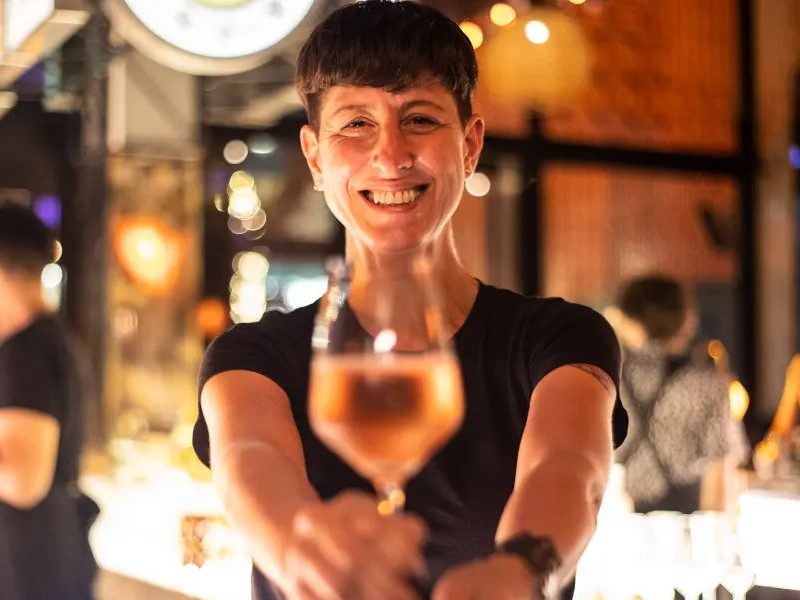
What was your relationship to pairings until then?
The sommelier course helped me to understand wines and pairings a lot, it’s very important. A dish can ruin a wine, or a wine can ruin a dish. The same thing happens with cocktails. The great thing is you can make an ad hoc cocktail for a specific dish. Tasting the dish and with the right tools, and an understanding of the ingredients…
Using the wines you can, that’s what being a sommelier is all about, learning about the wines of the world and getting ready to understand because wines change every year. So you have to know what’s going on with what is a wonderful ingredient. Cocktails are similar but it happens in real time. The fact is that lemons aren’t the same every year, strawberries… whiskies you hope will stay consistent.
But a cocktail is the here and now, I make it with the ingredients I have to hand. You get that precision that maybe wine doesn’t allow you. Or only with great effort. So, when I made my pairings, when it was obvious that a dish would go well with a yoghurt, or another with a beer, then I decided that that’s how it should be. And I was right.
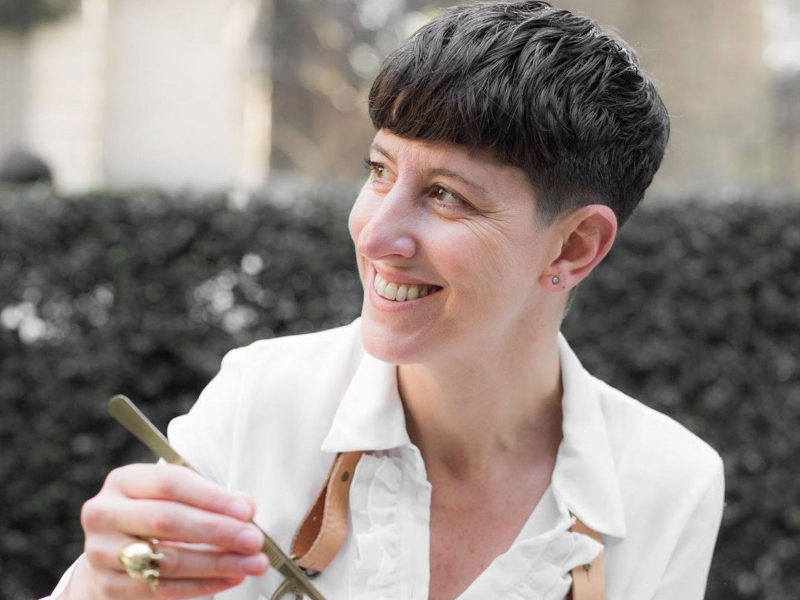
At some point, wine tended to be aimed at one market, and cocktails another. There wasn’t a fluid dialogue like there is today. You’re one of the reasons for that aren’t you? How did it happen?
Firstly, the Danzón always encouraged study, they wanted their staff to get training and grow. There isn’t a Harvard of cocktail making in Argentina, so getting validation for the profession was difficult. A sommelier course could give you certain skills and knowledge.
So, once you start to understand wine, the qualities of each variety, each region, you start to understand that you have a fantastic ingredient and that there are a lot of differences. When you understand the varieties, then you have a lot of ingredients at your disposal. I understood that and always employed that knowledge. Second: in 2001 we were left without ingredients, there weren’t any drinks because importation shut down.
What there was, was poor quality. But because the exchange rate was favorable, the bar exploded, it was full of tourists. But we had to tell them we were out of this or that. Suddenly, one day, setting up the bar, I saw all the wine taps we had and said to myself, “That’s it! This is a wine bar. We need to make a menu of cocktails with wine.” And we did pretty well. Misfortune brings luck (laughter), it gives me problems to solve.
Today, I do a different kind of cocktail-making, I greatly enjoy – it’s a private joke – flirting with wine. I don’t want it just to be part of a Negroni with white wine: I want the white wine to be the protagonist. So, I seek out wines with plenty of character and I play with them. With cocktail pairings, you can also control the alcohol content. I always try to do something similar with the wine: doing a few courses with wine cocktails also helps the customer to try the whole menu.
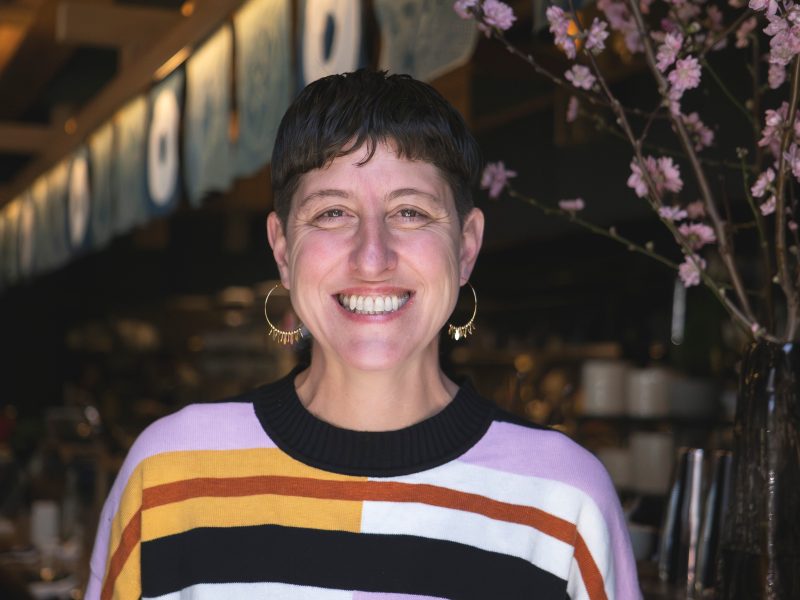
PH: Martín Piccinati
Have you seen changes in how consumers relate to drinks?
Consumers have made great progress, they know a lot more. When I started out, cocktail was a dirty word, it was a way of hiding the fact that the drinks were poor. When it comes to wine, today we know a lot: temperature, the glass, the right glass for this or that wine! Today you see them in every home. Wine refrigerators are common now.
And communication helped with that. Communication and people like her (points at her partner Narda Lepes), who communicates on TV programs, at fairs, in specialized magazines, in our classes. When I go to Vinexpo and meet everyone, I think “we’re doing something wrong.” Without the customer, what we do doesn’t make sense. If you don’t communicate what you’re doing to new audiences, it gets lost.
Your husband works in wine. Do you see yourself making wine in the future?
Yes, absolutely. I recently made some vermouths, but the next step is wine. I’d love to. I was in Mendoza at the beginning of the year, I went to La Estocada, I’m good friends with Matías Michelini. I was there, in the winery, I stayed overnight, got up and said, “I need to do this.”
Do you see yourself going in any direction in particular?
I want to make white wines. I’m sure of that. It’s white. I’d like to retire in Mendoza, go out the right way. So I’m realizing that I need to start that journey now, it’s a long road.

